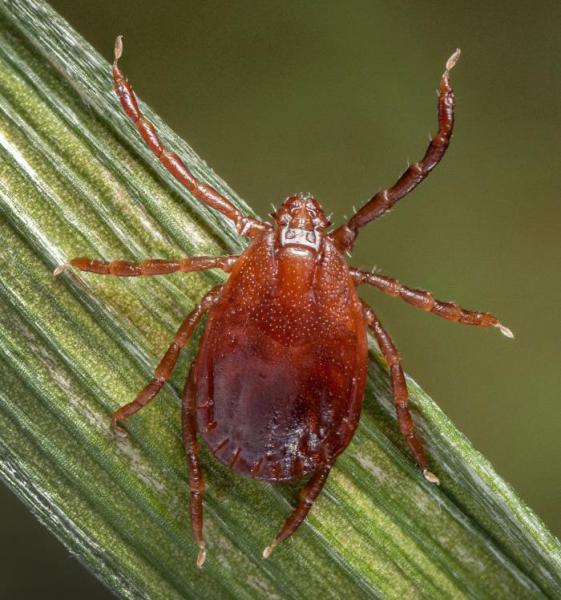Haemaphysalis longicornis Neumann, 1901 (ITIS)
Asian longhorned tick, bush tick, cattle tick
Eastern Asia (Egizi et al. 2020)
First detected in New Jersey in 2017, but specimens were collected as early as 2010 (Egizi et al. 2020)
Has been intercepted at U.S. ports of entry on imported animals and materials (CDC 2018)
Potential vector of several human and animal diseases present in the United States (CDC 2018)

Asian longhorned tick, adult female dorsal view climbing on a blade of grass
Photo by James Gathany; CDC
Find more images
Spotlights
Distribution / Maps / Survey Status
Videos
All Resources
Selected Resources
The section below contains highly relevant resources for this species, organized by source.
Partnership
Federal Government
International Government
State and Local Government
Academic
Centers for Disease Control and Prevention. 2018. Multistate infestation with the exotic disease–vector tick Haemaphysalis longicornis — United States, August 2017–September 2018. Morbidity and Mortality Weekly Report 67(47): 1310–1313.
Egizi, A., L. Bulaga‐Seraphin, E. Alt, et al. 2020. First glimpse into the origin and spread of the Asian longhorned tick, Haemaphysalis longicornis, in the United States. Zoonoses and Public Health 67(6):637-650.
Integrated Taxonomic Information System. Haemaphysalis longicornis. [Accessed Mar 12, 2023].
 An official website of the United States government.
An official website of the United States government.